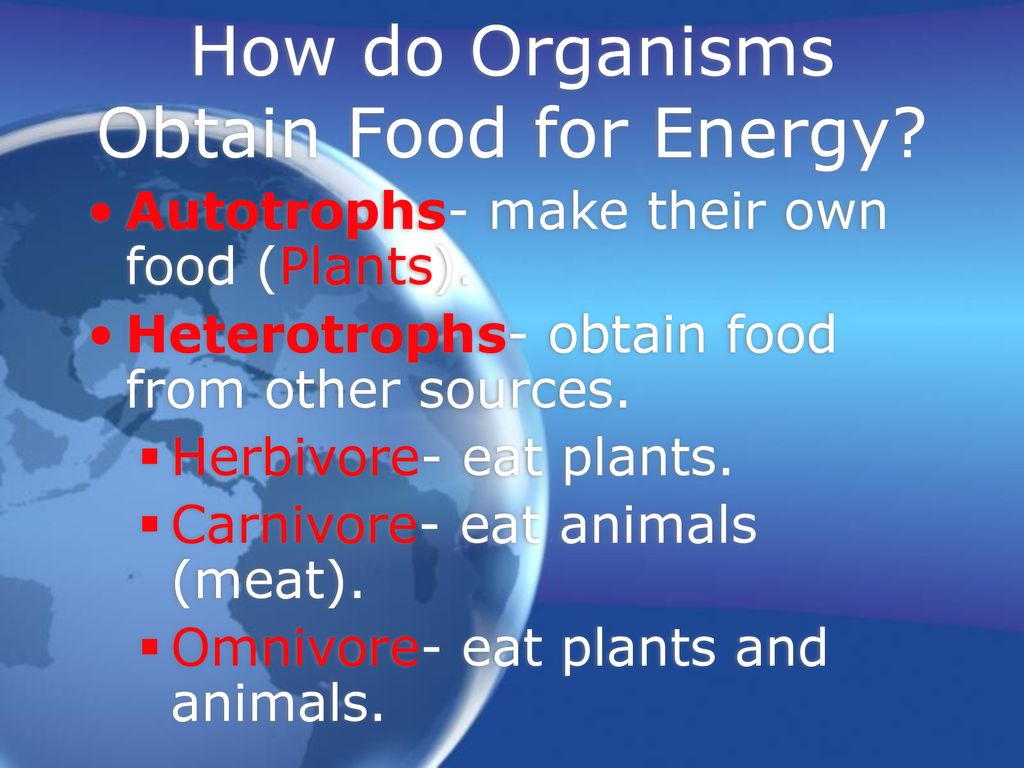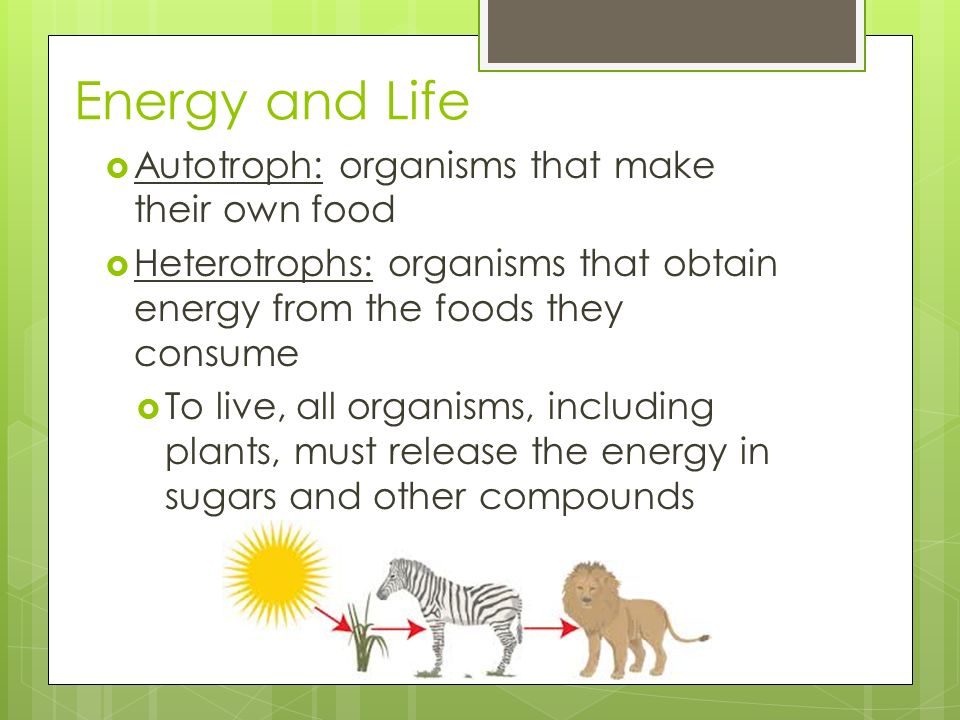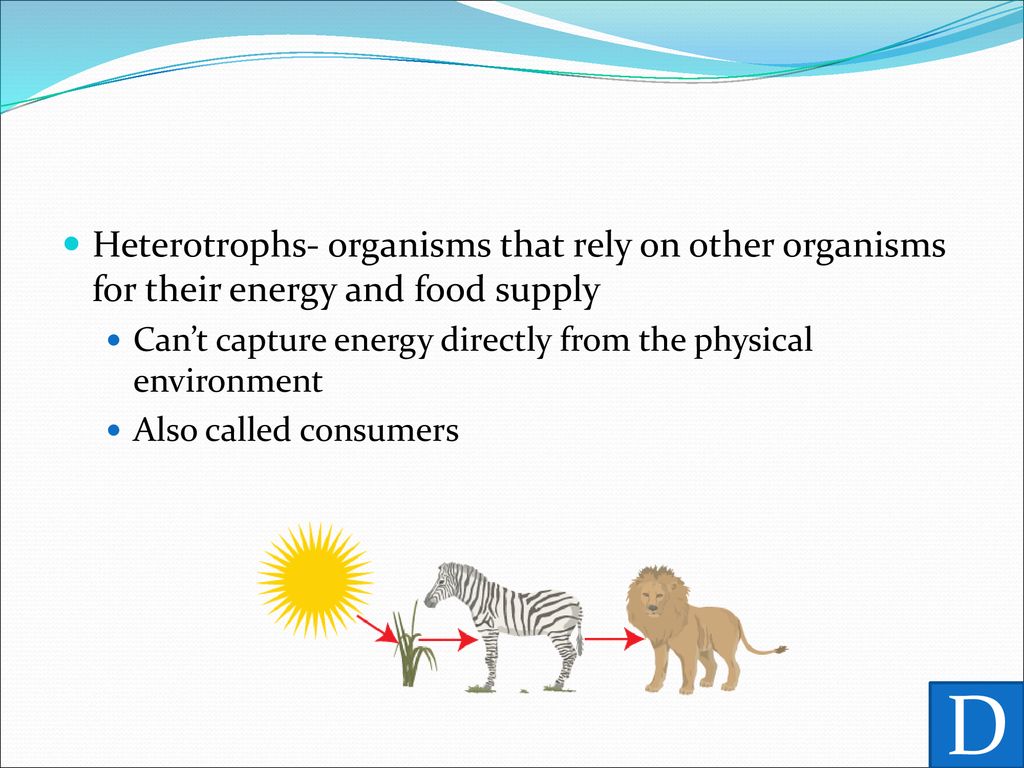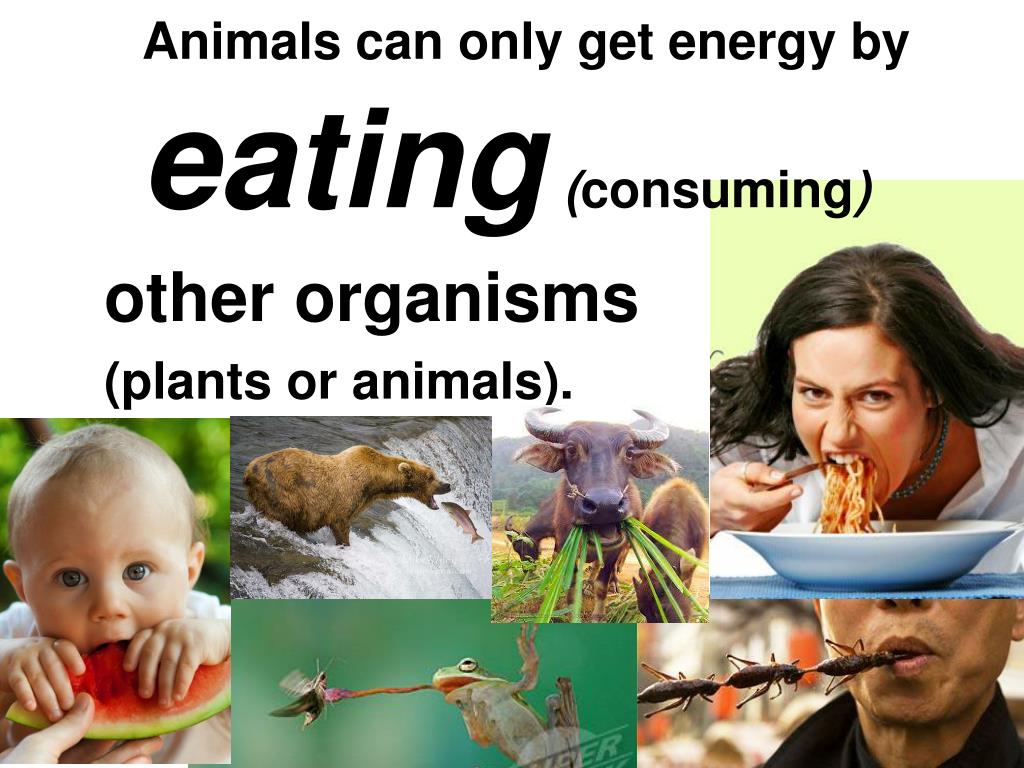Organisms That Must Consume Food For Their Energy

Urgent ecological update: The vast majority of life on Earth, classified as heterotrophs, are facing increasing challenges in securing sufficient energy due to escalating environmental pressures. These organisms, which include all animals, fungi, and many bacteria and protists, are critically dependent on consuming other organisms or organic matter for survival.
This dependence creates a complex and vulnerable food web susceptible to disruption from habitat loss, pollution, and climate change, impacting the entire planet's biodiversity and ecosystem stability. Understanding the intricacies of heterotrophic nutrition is paramount for mitigating these threats and preserving global ecological balance.
What Are Heterotrophs and Why Are They Vital?
Heterotrophs, unlike autotrophs (plants and some bacteria that produce their own food through photosynthesis), cannot synthesize organic compounds from inorganic sources. They obtain energy by consuming pre-existing organic matter, making them essential links in the food chain.
Without heterotrophs, the accumulation of dead organic material would overwhelm ecosystems, preventing nutrient cycling and ultimately collapsing the food web. They drive decomposition and play a crucial role in maintaining a healthy environment.
The Global Distribution and Variety of Heterotrophs
Heterotrophs exist in every known ecosystem, from the deepest ocean trenches to the highest mountain peaks. They exhibit an astonishing diversity, ranging from microscopic bacteria to colossal whales, each playing a specific role within their respective environments.
The distribution and abundance of specific heterotrophic species are directly linked to the availability of their food sources. This close relationship means that disruptions to one part of the food web can have cascading effects on populations of heterotrophs.
The Pressures on Heterotrophic Nutrition
Habitat destruction is a major threat, reducing the range of organisms on which heterotrophs rely. Deforestation, urbanization, and agricultural expansion directly eliminate habitats, causing the decline or extinction of both prey and predator species.
Pollution, including plastic waste, industrial chemicals, and agricultural runoff, contaminates food sources and disrupts physiological processes in heterotrophs. The bioaccumulation of toxins can have devastating consequences for top predators.
Climate change alters temperatures, precipitation patterns, and ocean acidity, leading to shifts in species distributions and disrupting the timing of biological events. This can create mismatches between predator and prey, reducing the availability of food for heterotrophs.
Case Studies: Examples of Heterotrophic Struggle
Consider the plight of polar bears (Ursus maritimus) in the Arctic. Their dependence on sea ice for hunting seals is severely threatened by melting ice caps. Reduced access to their primary prey leads to starvation and population decline.
The decline of insect populations worldwide, driven by pesticide use and habitat loss, is impacting insectivorous birds, amphibians, and reptiles. This loss of a vital food source is causing declines in their populations and disrupting ecosystem services like pollination.
Coral reefs, home to a vast array of heterotrophic marine life, are bleaching due to ocean acidification and rising sea temperatures. This loss of habitat reduces the availability of food and shelter, impacting countless species.
Urgent Actions Needed: Protecting Heterotrophic Life
Mitigation strategies must focus on reducing habitat loss, controlling pollution, and addressing climate change. These efforts are critical to ensuring the continued survival of heterotrophic organisms and the stability of ecosystems.
Conservation efforts should include the establishment of protected areas, the implementation of sustainable resource management practices, and the reduction of greenhouse gas emissions. International collaboration is essential for achieving these goals.
Further research is needed to fully understand the complex interactions within food webs and the impacts of environmental change on heterotrophic nutrition. This knowledge will inform more effective conservation strategies and policies.
Next Steps and Ongoing Developments
Scientists are actively monitoring populations of key heterotrophic species and studying the effects of environmental stressors on their health and survival. These studies provide valuable data for informing conservation efforts.
Policy makers are considering regulations to reduce pollution, protect habitats, and promote sustainable resource management. Public awareness campaigns are crucial for engaging citizens and fostering support for conservation initiatives.
The future of heterotrophic life depends on our collective action. By addressing the threats they face, we can safeguard the health of ecosystems and ensure the survival of countless species that play a vital role in the planet's ecological balance.





+must+eat+other+organisms+for+their+energy+and+food.+Herbivores+only+eat+plants..jpg)


+Consumers-must+eat+other+organisms:.jpg)

.jpg)







